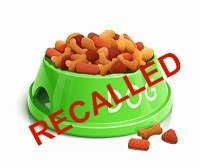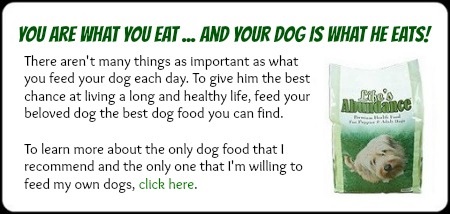- Home
- About Us
- Contact Us
- Privacy Policy
- What's New!
Dogs and Chocolate,
a Very Bad Combination!
Dogs and chocolate may seem like a great combination, but they are definitely not. New dog owners should be aware of the dangers posed by chocolates and keep them away from their dog at all times.

The problem with dogs and chocolate is that cocoa is toxic to our canine friends. Most of us love chocolate and we like to share what we love with our dogs.
But in the case of chocolate you must resist that temptation. Keep all chocolates out of your dog’s reach and make sure everyone in the house knows this.
What makes chocolate so bad for dogs?
Chocolate naturally contains substances (such as caffeine and theobromine) that have a bad effect on dogs.
The technical term for these substances Methylxanthine Alkaloids (don’t worry, you don’t need to remember that) and if eaten they will stimulate your dog’s nervous system...increasing the heart rate of your dog.
How much chocolate is bad for your dog?
A very small amount will likely have no noticeable effect. But, a large quantity could be deadly.
The effect of the chocolate on your dog depends on a few factors:
- The type of chocolate that your dog ate. Dark chocolate has more of the dangerous alkaloids than milk chocolate and therefore is more dangerous.
- The size of your dog. A very big dog could tolerate more chocolate than a small dog.
- The age and general health of your dog. A young and healthy dog will tolerate a small amount of chocolate better than an older dog or one in poor health.
Could eating chocolate be fatal to your dog?
As I said, dogs and chocolate are a bad combination. If enough chocolate is eaten it could be fatal.
How much is too much? Well, if you have a 10 pound dog, it would only take 2 to 3 milk chocolate bars to cause death (assuming you don’t take any steps to deal with the problem).
One or 2 bars of dark chocolate could be enough to kill a small dog.
What are the symptoms of chocolate poisoning?
If your dog eats a significant amount of chocolate, you may see the following symptoms develop within 6 to 12 hours:
- Restlessness and anxiety are the most common symptoms.
- Severe thirst and increased urination.
- Difficulty with breathing.
- Gastrointestinal distress and bloating.
- A fever. Your dog’s normal temperature should be in the range of 100.5 - 102.5 degrees F (38 -39.2 C). If your dog’s temperature exceeds 104 degrees, you should consider it an emergency situation and contact your vet immediately.
- Seizures.
What should you do if your dog eats chocolate?
Even if you try your best to keep dogs and chocolate apart, there’s always a chance that something could happen. Perhaps a child sees your dog and gives him part of a candy bar. Or, your dog finds a discarded chocolate bar and woofs it down before you can stop him.
If your dog eats a tiny amount of chocolate (for instance if he grabbed a chocolate chip cookie from your kids), your dog will probably be fine and not experience any symptoms.
But sometimes it’s better to be safe than sorry...
If you suspect that your dog has eaten more than a little chocolate (let’s say he got into the Halloween candy), it would be wise to contact your veterinarian for advice.
If your vet determines that your dog has eaten enough chocolate to be concerned, he may recommend one of these options:
- If you live close to your vet, he will probably ask you to bring your dog in immediately…especially if your pet is showing any of the symptoms listed above.
- If your vet is not close by or if you can’t get to your vet quickly, he will likely walk you through the process of inducing vomiting.
Prevention is best!
The best thing you can do is to make sure everyone that comes into contact with your dog understands that dogs and chocolate don’t mix.
Make sure that all chocolate and cocoa products are kept away from canine companions. Then, you’ll not have to worry about an emergency trip to the vets to deal with the problem.






